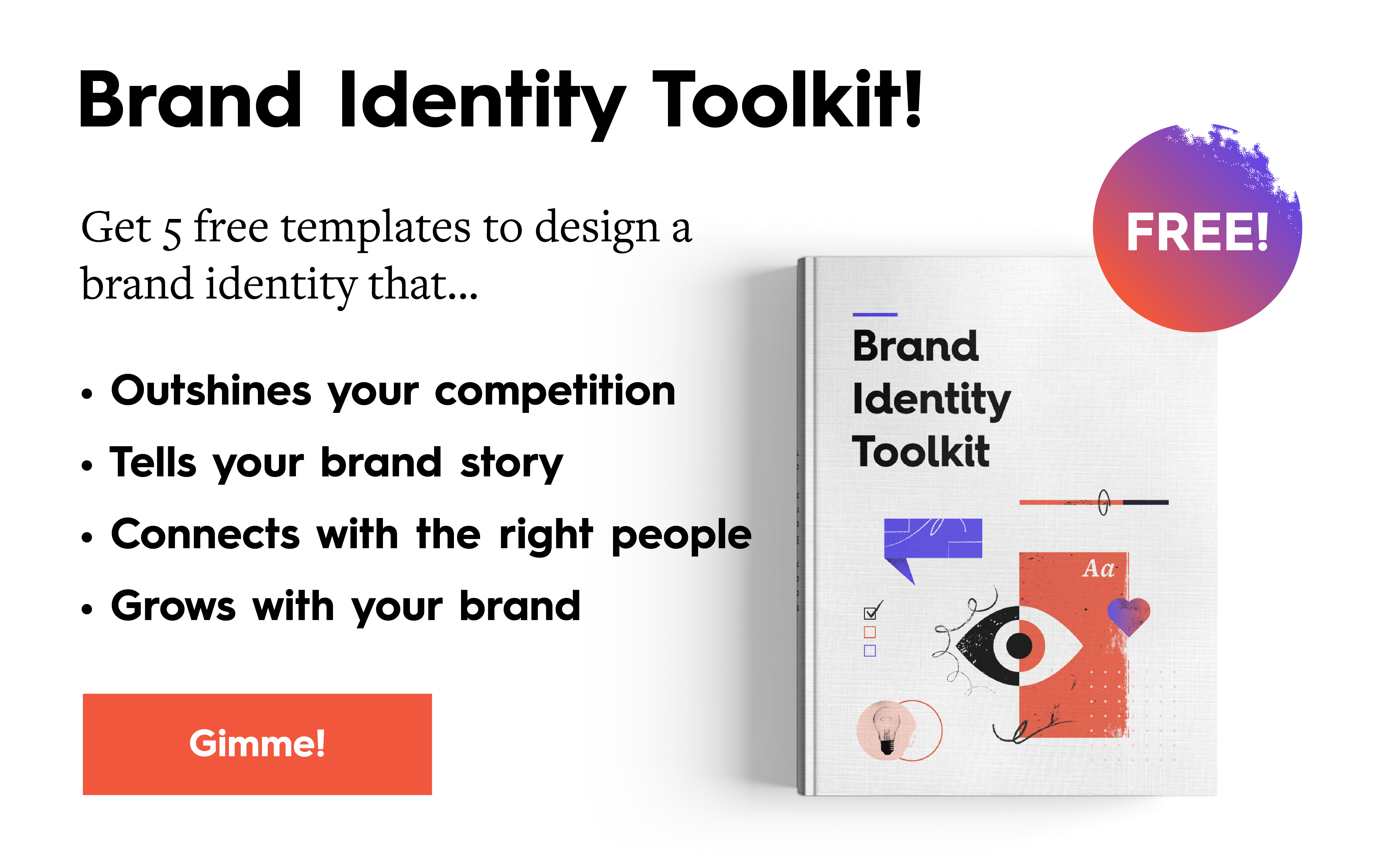For many content marketers, design is often an afterthought. This is especially true in B2B, where many brands are started by founders with tech or business backgrounds, who primarily focus on building and selling a product/service rather than building a strong brand experience. Of course, to do marketing well, you need a strong brand. Design is a core pillar of a strong brand, yet marketers think of it as a purely aesthetic add. Not so.
Research shows that the most innovative companies put design first—and when they do, their bottom line benefits. When it comes to marketing, embracing a designer’s mindset can have far-reaching benefits in more ways than you might think. From problem-solving to preserving brand integrity, designers approach their work in unique ways that can help you improve your marketing at every level.

How Do Designers Think?
Because their work is visual, most content marketers think designers are simply experts on shapes, colors, and fonts. While they are experts on those things, designers are so much more. They are strategists, storytellers, and artists, all wrapped up in one package. Why? Because design isn’t about making things pretty; it’s about communicating effectively. Day in, day out, designers labor to make their work more interesting, more exciting, and—most importantly—more effective by approaching each project in a strategic way.
- Designers are trained and experienced problem solvers. Design is, ultimately, a communication challenge: How do you use visual elements to tell a compelling story? How do you use a single element (e.g., a logo) to tell a whole story? How do you translate a 500-word blog post into a simple, eye-catching infographic? It’s a heavy lift, but this is what designers are adept at doing through intentional and intelligent decision-making. And while their medium is visual, their problem-solving and communication skills are universal.
- Designers are always thinking about the user experience. Whether it’s tweaking a data visualization to improve comprehension, creating a simple flow chart to communicate a complicated process, or making color shades more distinguishable for accessibility, designers are always conscious of how their work may be received—and always looking for ways to optimize and enhance it to create a better experience.
- Designers care deeply about brands and brand integrity. A strong and cohesive brand is crucial to differentiate yourself and create deeper connections with your audience. Designers pay attention to details, from color codes to photo filters, to ensure a brand remains strong in the marketplace.
- Designers care about the “why.” The best designers aren’t interested in ego; they design with restraint, using only the elements they need to serve the project. Because they care about the “why,” they will think critically and question every decision: Is this the best format for this story? Is this the right style for this illustration? Is this the right header size to grab attention? This deep thinking is critical to the success of not only the design but the entire project.
To create good content, you need your designer’s perspective to shape the direction of the content from the jump—not just to make it look presentable at the end. The more you bring design thinking into the process (and your own approach), the more you can elevate the work you create.
4 Ways Content Marketers Can Think Like Designers
Granted, most content marketers aren’t trained in visual design. But that doesn’t mean you can’t benefit from adopting a designer’s mindset. Here are four key ways to approach content marketing strategically and intelligently.
1) Know why you’re doing what you’re doing.
A good designer won’t use one more color than they need to. They won’t add an illustration to a chart just because they feel like it. They only do what serves their goal. If only content marketers focused on the same thing.
Way too many marketers create content because they think it’s what they’re supposed to be doing. They generate quantity over quality, publishing piece after piece just to prove they’re “doing something.” Instead, go back to the core of your marketing and reconsider exactly what it is you’re trying to achieve. Once you have clarity on your purpose, then you can create the strategy you need to bring it to life.
Tip: Use our guide to document your goals (and make sure they’re actually measurable). From there, you can vet your ideas to ensure they’re aligned to your goals.
2) Tap into empathy.
Designers are masters of emotion. They can curate a soothing color palette, choose the perfect playful font, create a specific mood with a photo collage, and so much more. But their design choices aren’t just about what “looks good”; they make specific choices to make their audience feel a certain way. (In my humble opinion, designers are more human-centric than the average content marketer.) Take a cue from designers and put yourself in your audience’s shoes.
What are their needs, wants, desires, and problems? What type of content can you create to provide genuine value? How do you want people to feel when they interact with your content (e.g., relieved, inspired, excited)? The more you focus on their needs (above your own), the more you will be rewarded with customer loyalty and leads.
Tip: Find out how to use empathy to brainstorm ideas that deliver true value to your audience, and see how other brands are doing it.
3) Optimize your content experience.
Because designers are problem-solvers, using their many talents to effectively tell a story, they think about not just what the story is but how it’s being told. For example, a designer might re-label a chart for better comprehension or use a specific layout to deliver the information more effectively. Similarly, content marketers should be thinking about more than their audience’s core emotional needs, which is what might make them interested in your content, and think of ways to enhance the audience’s experience with that content.
You may have a great idea for a piece of content, but have you thought about the best format for that piece of content? You may be talking about the great subjects, but are you using the keywords your audience will actually use? Make your audience do as little work as possible, and you will become both a trusted resource and a go-to brand.
Tip: Do a content audit to see how your competitors are presenting themselves across their touchpoints. What types of content are they offering? What type of CTAs do they use? This insight may help you spot your weaknesses and strengths across the buyer journey.
4) Create a consistent brand.
A good designer will always maintain a brand’s essence but push to find new ways to express the brand. Your marketing should do the same. Every piece of content you create shouldn’t be identical, but it should be cohesive. (This is especially important if you want to differentiate yourself from the crowd.)
That said, maintaining a strong brand identity can be increasingly difficult as you scale your content. The more you rely on outside creators (e.g., an agency or freelancer), the easier it is to stray. Over time, this only erodes your identity and can even affect your credibility.
Tip: Ensure you have a clear brand style guide that details your visual identity, brand voice, and personality. You can also create a checklist to ensure every piece of content you create is up to par. For more tips on preserving your identity, find out how to keep your content on brand.
Bring Your Designers Into the Fold
Whether you’re working with a designer in-house, using a freelancer, or collaborating with an agency, designers should be involved in your content marketing process from the beginning. Communicate your goals clearly, welcome their ideas, and give them the support they need (whether that’s a longer timeline or specific resources). In the meantime, keep looking for opportunities to improve your organization through design. If you’re not sure where to start…
- Find out why the little things in your marketing need good design the most.
- See our tips to use design to improve the way your brand communicates across your organization.
- Make sure to avoid these common design mistakes.
Most importantly, give your designers a strong foundation to build from. Use our free toolkit and guide to create a content strategy that gets results, or find out what it’s like to work with us on your content strategy. Remember: The more work you do to align your team, the better your work will be.





